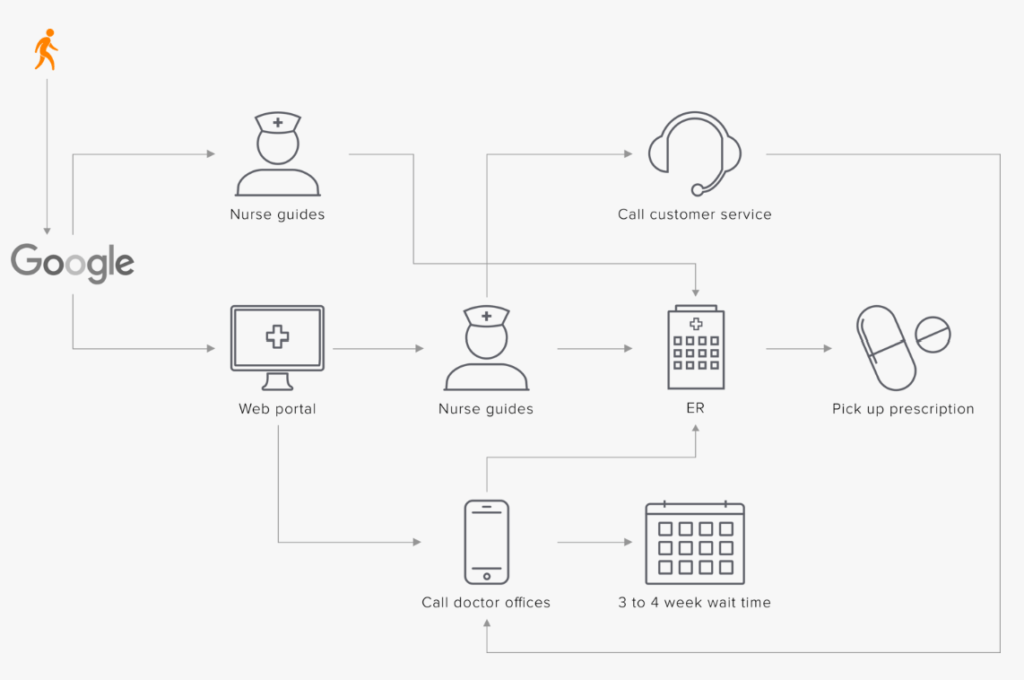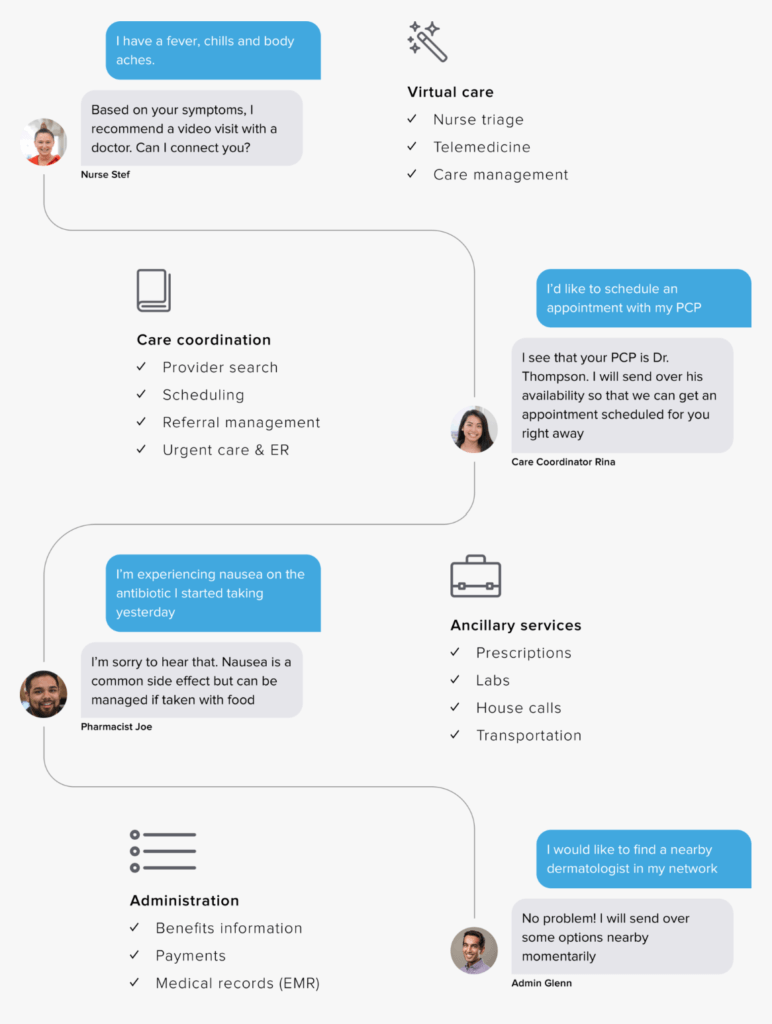Pager: A Digital Doctor in Every Patient’s Family

Pager’s innovative product, strategic business model, and rapid COVID-19 response are strong signs that the company is well-positioned to succeed in the forthcoming battle for dominance in telemedicine.
Introduction
Pagers were once popular among professionals and consumers alike but now mostly appear in our lives when a TV or movie director needs to establish that a scene takes place in the early 90’s. However, there is one arena where pagers remain widely used: hospitals, around 80% of which still regularly utilize pagers. Though there are some benefits to continued hospital pager use even in our increasingly digital world – for example long battery life and low hacking vulnerability – in part their persistent presence in medical facilities is a symptom of the slow-moving and incredibly complex nature of hospital operations and technology adoption.
The Evolution of a Pager (Image Source 1, Image Source 2)
Pager, a New York-based digital health start-up is seeking to disrupt the antiquated hospital communication system with a modern solution that streamlines collaboration between patients and care teams. Founded in 2014 by Uber co-founder Oscar Salazar, the company has raised $62M and partnered with health systems covering over 10 million patients around the world.
Value Proposition
Patients
For patients, Pager promises to streamline navigation and communication with various parties during the course of care by creating a single chat stream combining voice, chat, video, and photos to collaborate with nurses, doctors, pharmacists, and customer service to coordinate elements ranging from virtual care, scheduling, prescriptions, and payments. The goal is to create an incredible user experience that mimics having a “doctor in the family” by unifying traditionally fragmented healthcare interactions into a single streamlined thread.
Patient Journey without Pager (Image Source)
Patient Journey with Pager (Image Source)
Hospitals
For providers, Pager enables rapid implementation of a comprehensive digital solution that has myriad benefits. By digitizing interactions and incorporating artificial intelligence, Pager claims to increase utilization of virtual care to 66%, save hospitals $327 per chat, and improve call center productivity by 2-3x. Moreover, Pager has demonstrated that improved customer experience translates into improved patient compliance, as its members attend scheduled appointments 92% of the time compared to the approximately 70% industry standard.
Business Model
Long before COVID-19, Pager designed its business model to simultaneously promote agility and defensibility. Specifically, there are three key features of the model that laid the groundwork to enable their rapid COVID-19 response:
- Partnerships: Unlike many digital health / telemedicine offerings such as Hims and Roman that focus on a direct-to-consumer model, Pager’s approach is to be a white-label Software-as-a-Service offering to hospital providers and insurance payers that augments rather than disrupts the traditional care continuum.
- Integration: Pager’s flexible technology can be deployed to a new hospital system by either bypassing integration with their core IT systems or integrating extensively with existing EHR, pager data, and other information sources. The former allows for shortening the sales cycle while the latter drives a deeper value proposition.
- AI: A key element of Pager’s service is the incorporation of artificial intelligence to automate clinical decision-making, communication timing, and quality assurance. These features in turn allow for rapid deployment at scale by minimizing unnecessary human interaction.
COVID-19
The genesis of Pager’s rapid deployment of a COVID-19 offering occurred in March, when a large Colombian partner experienced a 4x increase in virtual care inquiries that completely overwhelmed their system, leading to long wait times, frustrated patients, and exhausted clinicians.
In part due to their close partnerships, Pager identified and reacted to this surge quickly by developing an AI-enhanced COVID-19 triage protocol in a matter of days. The immediate result was a successful flattening of the curve: about one-third of patients using the service were deemed low risk and advised to stay home, thereby minimizing both their exposure and the crowd levels at hospitals.
Customer Journey
Pager’s COVID-19 solution is an AI-based communication and clinical triage platform that helps patients navigate their COVID-19 care in a way that minimizes the impact on the healthcare system. A representative Pager patient journey is as follows:
- The patient contacts their payer/provider regarding COVID-19 symptoms and is diverted to a conversation with a Pager AI bot with an average wait time of only 30 seconds.
- The patient communicates with a bot that evaluates symptoms and assesses risk level.
- Low risk patients are given in-depth self-care recommendations without burdening a human clinician.
- Higher risk patients are immediately put in touch with clinician(s) for telemedicine consultation(s).
- If needed, the physician requests the patient go to a hospital. Not only does Pager provide the patient with specific instructions about hospital location and even which door to use, but the app also notifies to the hospital of the incoming patient to allow them to prepare.
- Impressively, the whole Pager interaction is normally completed within 20 minutes.
Pager can deploy the COVID-19 solution with zero integration, meaning both existing customers and new health systems around the world can implement the feature in a matter of only days. By removing the virtual care bottleneck, Pager is easing the minds of healthy patients, directing sick patients to needed care, and – critically – flattening the curve and reducing COVID-19’s impact on healthcare systems globally.
Sustainability
Pager’s strategically designed business model and rapid response to the COVID-19 outbreak position it well to succeed in the crowded telemedicine space. To capitalize on this, I recommend they do the following:
- Focus on core value proposition: Pager’s key competitive differentiation is that it’s not merely a telemedicine app but rather a comprehensive communication platform incorporating both digital bots and human interactions. Continuing to focus on augmenting rather than disrupting the traditional healthcare model will be critically important going forward.
- Incorporate COVID-19 learnings into main product(s): Since the COVID-19 outbreak, Pager’s usage has increased ~10x giving them a remarkable amount of usage data and insights. Pager should leverage these insights to optimize not only the COVID-19 features but also the core products, with a focus on finding the right balance between AI and human interactions.
- Expand partnerships rapidly: Pager should deploy their COVID-19 product with as many partners as possible by offering it free or at-cost. Not only is this the right thing to do in a global pandemic but it also allows them to get their foot in the door, demonstrate value, and lay the ground work to cross-sell their core product in the future when the COVID-19 pandemic is behind us.
Conclusion
Pager’s innovative product, strategic business model, and rapid COVID-19 response are strong signs that they’re well-positioned to succeed in the forthcoming battle for dominance in telemedicine. With any luck, the term “pager” will once again be commonplace, but it will represent a substantially more sophisticated communication system than before.
Sources
- Azevedo, Mary Ann. “Startups Pager, Hims & Hers Boost Telehealth Offerings to Address COVID-19 Pandemic. Crunchbase News. 2 April 2020. https://news.crunchbase.com/news/startups-pager-and-hims-hers-boost-telehealth-offerings-to-address-covid-19-pandemic/
- Berg, Joel. “From 8 to 50 states, Pager expands service nationwide.” MedCity News. 9 January 2020. https://medcitynews.com/2020/01/from-8-to-50-states-pager-expands-service-nationwide/
- Lam, Marisa. “Pager’s New COVID-19 Solution Aims to Help Flatten the Curve.” Business Wire. 2 April 2020. https://www.businesswire.com/news/home/20200402005294/en/Pager%E2%80%99s-New-COVID-19-Solution-Aims-Flatten-Curve
- Miller, Jen A. “Why the Hospital Pager Withstood the Test of Time.” Health Tech Magazine. 21 June 2019. https://healthtechmagazine.net/article/2019/06/why-hospital-pager-withstood-test-time
- Muoio, Dave. “JAMA editorial highlights pros, cons of D2C telemedicine services.” Mobi Health News. 29 July 2019. https://www.mobihealthnews.com/news/north-america/jama-editorial-highlights-pros-cons-d2c-telemedicine-services
- O’Leary, Kevin J et. al. “Hospital-based clinicians’ user of technology for patient care-related communication: a national survey.” Journal of Hospital Medicine. 12 July 2017. https://www.journalofhospitalmedicine.com/jhospmed/article/141692/hospital-medicine/hospital-based-clinicians-use-technology-patient-care?utm_source=News_JHM_eNL_071917&utm_medium=email&utm_content=Hospital-level%20factors%20associated%20with%20pediatric%20emergency%20department%20return%20visits#article-intro
- Pager company website. Accessed 28 April 2020. https://pager.com/
- “Pager Powers Horizon’s Telemedicine Solution for COVID-19.” CISION PR Newswire. 16 April 2020. https://www.prnewswire.com/news-releases/pager-powers-horizons-telemedicine-solution-for-covid-19-301042111.html






Hi Matt,
This is a great post and I really enjoyed learning about Pager. I agree that it has shown a huge impact during the COVID-19 pandemic and really is a fantastic telemedicine and triaging tool for patients when deciding whether they need to visit a hospital. However, I’m not sure how useful it is once the patient comes into the hospital. As a practicing doctor, I think calling the product “pager” is misleading because I do not believe this product will replace pagers, nor does it fulfill the role of a pager within a hospital setting.
During a shift, nursing staff and other allied health professionals will bleep/page doctors to physically see patients or perform emergency procedures. At the moment, based on Pager’s website, the product does not do this (at least based on the information I read on your post and their website). That being said, it might be in the company’s plans to expand its product offering and I imagine its something they can do quite easily. I do know of another company called “Medic Bleep”, which does this quite well in the UK’s NHS: https://www.medicbleep.com
Again, great post, and I look forward to seeing how Pager progresses in the future.